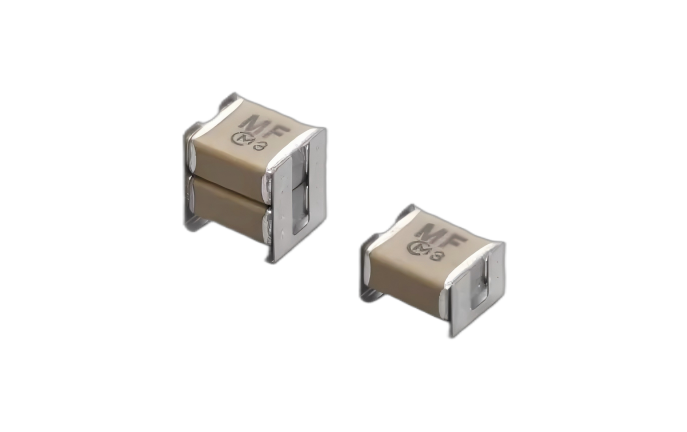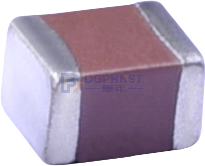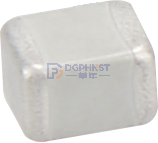As a widely used passive component in electronic circuits, the core parameters of thin film capacitors determine their performance and reliability in specific applications. The following is an original summary of the core parameters of thin film capacitors:
The core parameters of thin film capacitors can be divided into three categories: basic electrical parameters, performance characteristic parameters, and environmental and reliability parameters:
1、 Basic electrical parameters (starting point for design selection)
Nominal Capacity C:
Definition: The capacitance value measured under standard testing conditions (usually room temperature, low frequency) is a measure of the ability of a capacitor to store charge, measured in Farads (F), microfarads (µ F), nanofarads (nF), or picofarads (pF).
Importance: It is the foundation of circuit design and directly related to the filtering, resonance, coupling, timing and other functions of the circuit. The capacitance range of thin film capacitors is usually from picofarads (pF) to microfarads (µ F), much smaller than electrolytic capacitors but with better accuracy and stability.
Characteristics of thin film capacitors: The capacitance accuracy is usually high (such as J range ± 5%, K range ± 10%), and the capacitance value changes little with time and voltage.
Rated Voltage U_S:
Definition: The highest DC voltage or effective AC voltage (or the sum of DC and AC peak voltages) that a capacitor can continuously apply within a specified temperature range (usually the upper limit category temperature). Common ones include direct current rated voltage (DC) and alternating current rated voltage (AC).
Importance: It is a key parameter to ensure the safe operation of capacitors and prevent dielectric breakdown. In practical applications, it is necessary to reduce the rated voltage (such as using 70% to 80% of the rated voltage), especially in high temperature or situations with pulse voltage.
Characteristics of thin film capacitors: They have a high rated voltage (from tens of volts to thousands of volts or even tens of thousands of volts) and good insulation strength.
2、 Performance characteristic parameters (determining actual application performance)
Dissipation Factor tan δ/DF:
Definition: Also known as loss factor, it is the ratio of the equivalent series resistance (ESR) to the capacitance reactance (Xc) of a capacitor at a specific frequency (tan δ=ESR/Xc). It characterizes the degree of loss caused by capacitors converting electrical energy into thermal energy. The smaller the value, the better.
Importance: It directly affects the efficiency, temperature rise, and high-frequency performance of capacitors. Low loss is crucial for power applications such as resonant circuits, filtering, energy transfer, high-frequency applications, and signal processing. Excessive loss can lead to capacitor heating, shortened lifespan, and even failure.
Characteristics of thin film capacitors: This is one of the core advantages of thin film capacitors. Especially polypropylene (PP) film capacitors have extremely low loss tangent values (as low as 0.0001-0.001 at 1kHz), far superior to electrolytic capacitors. The capacitance loss of polyester (PET) film is relatively high (about 0.005-0.02).
Temperature characteristics:
Definition:
Temperature Coefficient (TC): The ratio of capacitance value to temperature variation (e.g. ppm/° C). It may be positive temperature coefficient (PTC) or negative temperature coefficient (NTC), or it may be relatively stable within a certain temperature range.
Operating Temperature Range: The temperature range within which a capacitor can ensure its rated parameters and performance (such as 40 ° C to+85 ° C, or+105 ° C).
Importance: The circuit needs to operate stably at different ambient temperatures, and the drift of capacitance values with temperature can affect circuit performance (such as filtering cutoff frequency, oscillation frequency). High temperature can accelerate aging, while low temperature may affect the performance of the medium.
Characteristics of film capacitors: Polypropylene (PP) capacitors have excellent temperature stability (small capacitance changes, low temperature coefficient, and good linearity). Polyester (PET) capacitors have a high temperature coefficient (approximately+400~+600 ppm/° C). High temperature film capacitors (such as PPS and PTFE materials) can operate at temperatures of+125 ° C or even higher.
Insulation Resistance IR/Time Constant τ:
Definition:
Insulation resistance (IR): The ratio of the DC voltage applied across a capacitor to the leakage current through the dielectric (usually measured in M Ω or G Ω). The larger the value, the better.
Time constant (τ): A more commonly used metric defined as the product of capacitance (C) and insulation resistance (IR) (τ=C IR), measured in seconds (s). It reflects how long a capacitor's ability to store charge can be maintained without being depleted by leakage current.
Importance: Characterize the insulation quality of capacitive media. High insulation resistance (large time constant) means extremely low leakage current, which is crucial for high resistance circuits, integration circuits, sample and hold circuits, timing circuits, and low-power applications.
Characteristics of thin film capacitors: Thin film capacitors typically have extremely high insulation resistance (G Ω level) and very large time constants (thousands to tens of thousands of seconds), which is another significant advantage over electrolytic capacitors.
Frequency Characteristics:
Definition: The characteristic of the impedance (Z) of a capacitor (including capacitance impedance Xc and equivalent series resistance ESR) as a function of operating frequency.
Importance: The performance of capacitors at high frequencies is different from that at low frequencies. The capacitance impedance (Xc=1/(2 π fC)) decreases with increasing frequency, but the presence of equivalent series inductance (ESL) causes the capacitor to resonate at a certain frequency point (self resonant frequency SRF), with impedance reaching its minimum value and then exhibiting inductance, with impedance increasing with increasing frequency. The tangent of the loss angle (tan δ) also varies with frequency.
Characteristics of Thin Film Capacitors: Thin film capacitors, especially those with non inductive winding structures, typically have low equivalent series inductance (ESL), resulting in a wide effective frequency range and high self resonant frequency (SRF), making them highly suitable for high-frequency applications such as RF and switching power supply filtering. The high-frequency performance of PP capacitors is usually superior to PET capacitors.
Self healing property (SelfHealing Property only applies to metalized film capacitors):
Definition: When there are small defects (such as impurities and pinholes) in the local dielectric of a metalized thin film electrode that cause dielectric breakdown, the metal coating around the breakdown point can quickly evaporate/oxidize under the action of arc energy, isolate the breakdown point, and restore the insulation performance of the capacitor and continue to work.
Importance: Greatly improving the reliability and lifespan of capacitors is a key advantage of the widespread application of metalized thin film capacitors. The self-healing process will result in a slight decrease in capacitance and a slight increase in losses.
Characteristics of thin film capacitors: This is a unique property of metalized thin film structures (metal vapor deposited on thin film media), which foil structures (metal foil electrodes) do not possess.
3、 Environmental and reliability parameters (ensuring long-term stable operation)
Life&Durability:
Definition: The expected time for a capacitor to continuously operate normally and maintain its key parameters (such as capacitance changes, loss changes, IR) within the allowable range under specified environmental conditions (mainly temperature) and applied voltage (usually rated voltage).
Importance: Directly related to the long-term reliability and maintenance cycle of electronic devices. High temperature is the main factor accelerating the aging of capacitors (following the Arrhenius equation).
Characteristics of Thin Film Capacitors: Thin film capacitors typically have a very long theoretical lifespan (tens of thousands or even over 100000 hours), far superior to electrolytic capacitors. High temperature and applied voltage will significantly shorten the actual lifespan. Manufacturers typically provide guaranteed lifespan data at specific temperatures (such as+85 ° C,+105 ° C) and rated voltages.
Summary and selection points
Selection starting point: Firstly, determine the capacitance value (C) and rated voltage (U_S) based on the circuit requirements (which must be downgraded for use).
Performance key:
Pay attention to the loss tangent (tan δ), especially in power and high-frequency applications, and choose low loss PP capacitors.
Pay attention to temperature characteristics, ensure that the content value changes within an acceptable range within the working temperature range, and select PP capacitors with good temperature stability. Pay attention to the upper limit of high temperature.
Pay attention to insulation resistance/time constant, which is crucial for high impedance, timed, and low leakage applications.
Considering frequency characteristics, ESL and SRF should be considered for high-frequency applications, and non inductive structures and PP capacitors should be preferred.
Reliability guarantee:
Self healing (metalized structure) is an important mechanism for improving reliability.
The lifespan parameter provides a reference for durability under expected operating conditions, which needs to be evaluated in conjunction with operating temperature and voltage.
Other factors such as package size, pin form, material type (PP, PET, PPS, PTFE, etc. each have their own strengths), safety certification (such as UL, VDE, CQC), etc. also need to be considered in actual selection.
Only by understanding and comprehensively weighing these core parameters can the most suitable and reliable thin film capacitors be selected for specific application scenarios.



